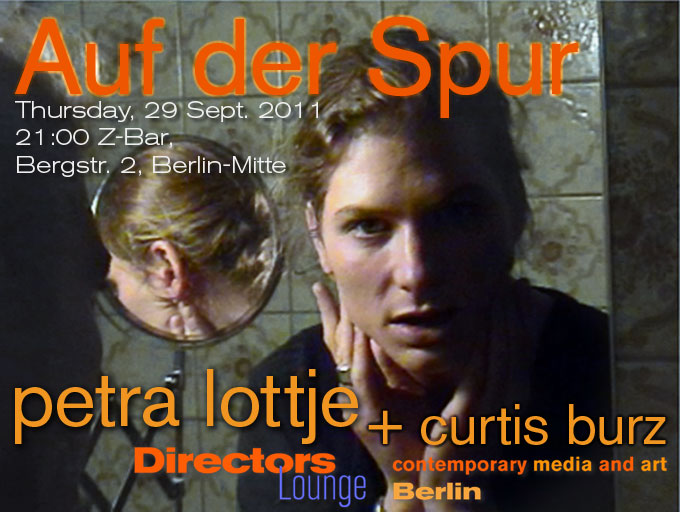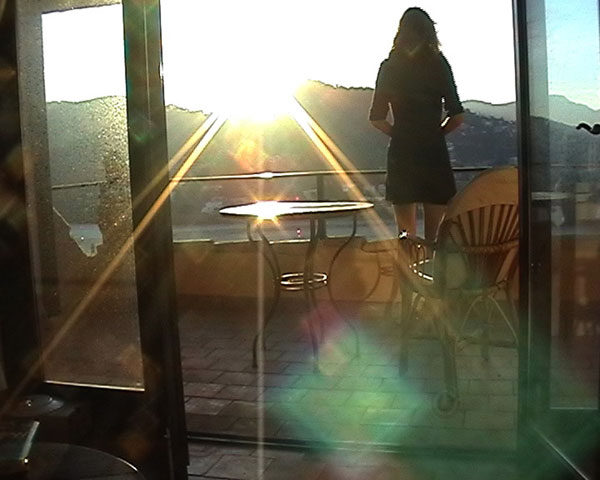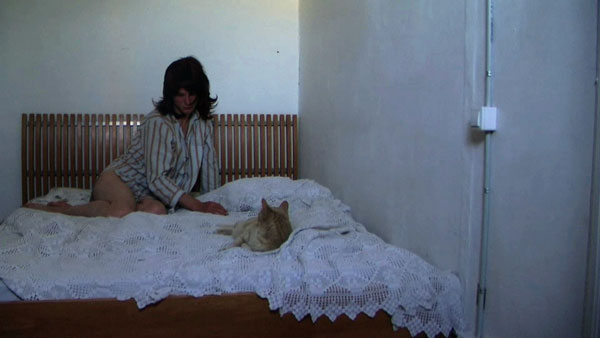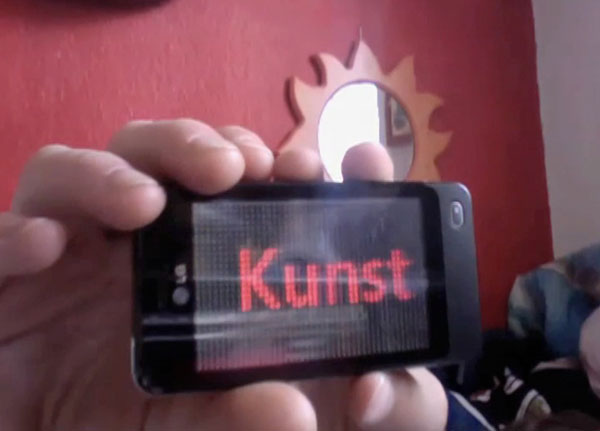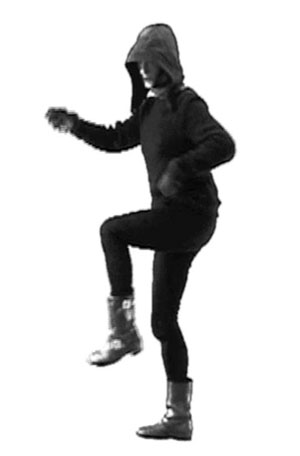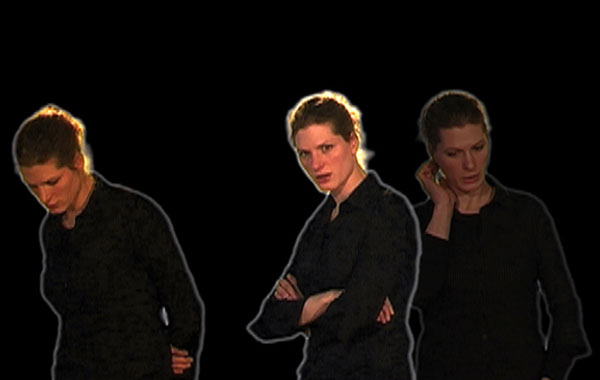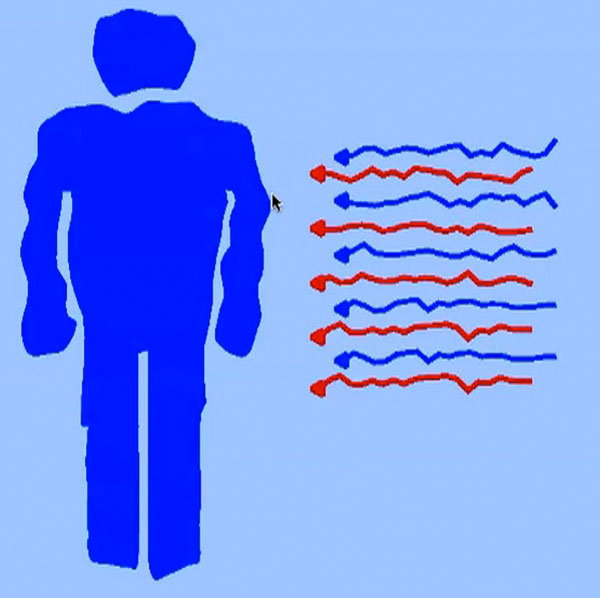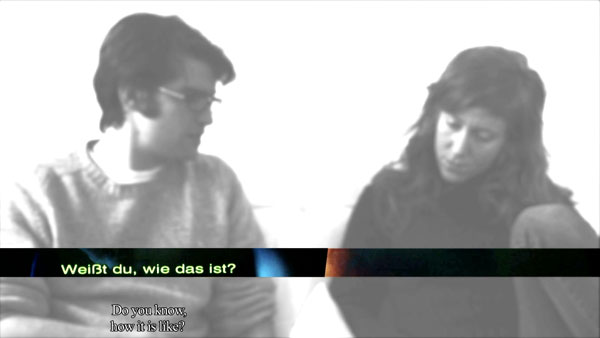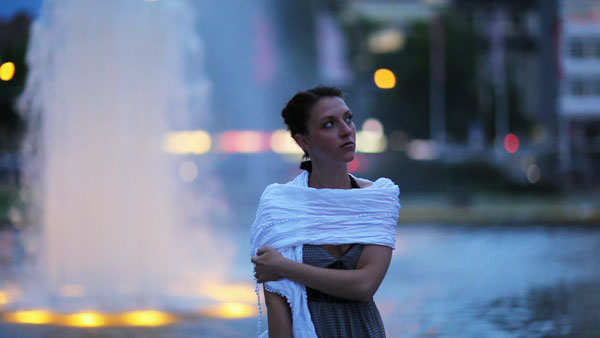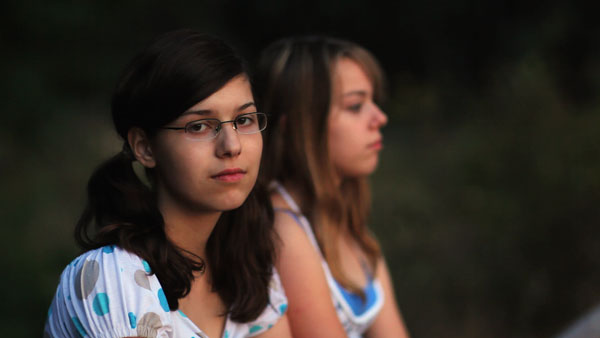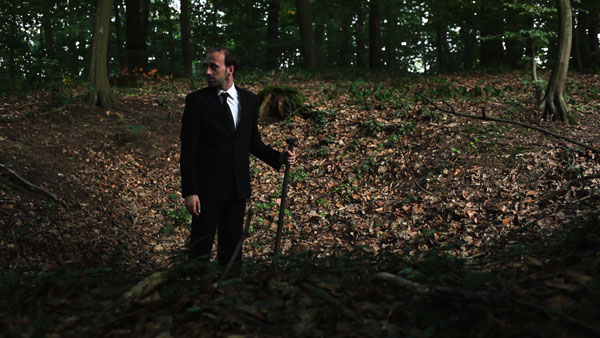 |
directors lounge special screening
petra lottje + curtis burz
auf der spur
video works
Donnerstag, 29. Sept 2011
21:00
Z-Bar
Bergstraße 2
10115 Berlin-Mitte
Directors Lounge präsentiert ein Programm mit Petra Lottje und Curtis Burz. Beide Künstler, mit ganz unterschiedlichem Hintergrund, Bildende Kunst bei Petra Lottje und die dokumentarische Tradition europäischen Kinos bei Curtis Burz, befassen sich mit zwischenmenschlichen Beziehungen. Ob diese nun eigentlich “auf der Spur" sind (on track) oder “abseits der Spur" (off track) bleibt auch über die ambivalente Benutzung der Medien oder des Recordings bei beiden Künstlern offen, oder hängt davon ab, welchen Blickpunkt der Beobachter (Zuschauer) selbst einnehmen will. Der Zugang zu den Medien mit denen sie arbeiten, bleibt bei beiden Künstlern ambivalent, bei beiden findet sich einerseits ein radikal persönlicher Ansatz andererseits die Künstlichkeit des inszenierten Bildes.
In “Jedes Zimmer Hinter Einer Tür" inszeniert sich Petra Lottje als den weiblichen Part unterschiedlicher Filme, indem sie den Synchronstimmen ihr “Gesicht leiht," tonlos wie im Playback-Verfahren, das wir aus Fernsehshows kennen. 25 Szenen entwickeln sich zu eigenständigen Episoden, mit je zu dem Text passendem Setting. Gleichzeitig ist das Playback nicht 'perfekt', manche Lippenbewegungen sind nicht synchron und auch das Setting — alle Aufnahmen für “Jedes Zimmer.." fanden in ihrer eigenen Wohnung statt — scheint nicht immer ganz zum Dialog zu passen, so dass es auch eine Parodie auf die stereotypen Frauenbilder der Medien sein könnte. Dazu bleibt das Spiel jedoch zu reduziert, zu minimal. Ähnlich wie bei Filmen von Buster Keaton dient das Gesicht der Protagonistin, also Lottje, vor allem der Projektion des Betrachters. (Buster Keaton's “Poker Face" war eine Neuerung im Filmschauspiel, die das Kino nachhaltig verändern sollte. Einige Filmkritiker sehen in ihm den Anbeginn des modernen Kinos, bei dem die Großaufnahme mit nur minimalsten Regungen des Schauspielers, oder der Schauspielerin den projizierten Gefühlen des Zuschauers Raum gibt.) Etwas steht dem parodistischen Re-enacting auf jeden Fall entgegen: obwohl die gesprochenen Texte nicht weniger stereotyp sind, verändert sich der Eindruck über die Zeit, Schauspiel, Text und Inszenierung scheinen immer “echter" zu werden. Dies passiert nicht nur im Verlauf der Szenen von “Jedes Zimmer Hinter Einer Tür", sondern gilt für das ganze Programm.
Vielleicht überrascht es zu hören, dass Petra Lottje die Tonclips mit denen sie arbeitet auswählt, weil sie sie tatsächlich berühren. Und wenn man sich auf die kurzen Filme emotional einläßt, beginnen sich die Wahrnehmungskategorien zu drehen wie ein Karoussell. Lottje sammelte ursprünglich Synchronstimmen aus Hollywood und anderen Mainstream-Filmen um diese zu Toncollagen und Soundinstallationen zusammenzufügen, bis sie der Wunsch nach einer auch bildhaften Umsetzung zum Video führten. Versuchen wir die kritische Distanz zu wahren, könnten wir eine Strategie der “Kritik durch Affirmation" konstatieren. Ein Kritisieren durch totale Bejahung wie sie auch der Pop-Art zugesprochen wird. Den distanziert-kritischen Blick gibt aber auch bei Lottje. Sie stellt die Frage, warum wir uns in diesen typisierten Szenen wiedererkennen: Leben wir unser Leben so sehr nach banalen Mustern, die uns auch noch zum großen Teil von Hollywood vorgegeben werden?
Ein Hollywood-Studio ist ein Zusammenspiel ganz vieler Kräfte, die mit ihrer Kreativität zum gelingen des Werkes beitragen; zumal im Produzentenfilm, bei dem in der Regel der Produzent einen Stoff findet, die Rechte zur Verfilmung kauft, einen Drehbuchautor (oder -Team) und einen Regisseur beauftragen, den Stoff umzusetzen, wobei wiederum Bühnenbild, Maske, Licht, Ton, Musik, Kamera und Spezialeffekte ihren Teil dazu beitragen. In den Synchronstudios wird der Stoff dann weiter verändert, nicht nur der Text wird übersetzt und dem Rhythmus des Sprechenden angepasst, auch Soundkulisse und Dialekt (ins Hochdeutsche übertragen) werden verändert, nicht zuletzt auch durch das Timbre der Sprecher. Im Gegensatz dazu geht das klassisch-moderne Konzept der bildenden Kunst von einem alles bestimmenden und möglichst auch ausführenden Genie in einer Person aus, was vor allem auf die Malerei und den Experimentalfilm zutrifft, aber auch das Konzept des Autorenfilms liegt hier nicht weit. Petra, obwohl in der Mehrzahl ihrer Filme selbst die Hauptperson, sieht sich viel mehr als Teil der Produktionskette des großen Filmes. Sie setzt diese fort, durch ihre Auswahl und weiter dadurch, dass sie der Synchronstimme wieder “ihr Bild" verleiht. Diese Idee findet sich auch in anderen Arbeiten. “Vielleicht zu lange" entstand aus einem untertitelten japanischen Spielfilm. Hier läßt die Künstlerin zwei Schauspieler den Text der deutschen Untertitelung sprechen. Der Streifen mit unterlegten Original-Untertiteln (und Bild) wurde dann von Petra entsprechend dem Tempo der Schauspieler angepasst.
Andere Videos von Petra Lottje basieren stärker auf Bilder und Kameraarbeit. Eine häuslich-familiäre Szene führte zu “Kunst ist schön, Alltag ist schöner", das Intro in diesem Programm. Die reine Beobachtung in einem Zeitraum der Erholung wird ohne viel Editieren zu “Freizeit", und selbst die Bebilderung von “El Momento", obwohl diese auf einen Text zum Spanischlernen basiert, scheint eine Art Selbstbeobachtung zu sein.
“Beobachtung" ist vielleicht das Schlüsselwort für Petra Lottje's Arbeit, trotz aller inszenierter Bilder. Die gesammelten Stellen oder Szenen werden einer Art beobachtenden Untersuchung unterworfen. Die seltsame Verfremdung, die schon durch das Hochdeutsch der Synchronstimme geschieht, hilft dabei, und ist nicht das “Nachsprechen" des Textes durch die Künstlerin weniger ein “in die Rolle schlüpfen" als ein testendes (beobachtendes) Ausprobieren des eigenartig bekannten Kontextes des Textes?
“Beobachtung" möchte auch eine gute Überleitung in das Werk von Curtis Burz sein, der von Petra Lottje eingeladen wurde, einen Teil des Programmes zu bestreiten. Da die neueren Filme von Burz programmfüllende Features sind, werden drei Episoden aus dem Episodenfilm “Ich habe Dir nie erzählt, womit ich meine Geld verdiene" vorgestellt. Curtis Burz geht zunächst den umgekehrten Weg, er recherchiert Geschichten aus Beobachtungen des Alltags und Interviews. Zumeist interessieren ihn Geschichten des Abweichens von der 'Normalität'. In “Ich habe Dir nie erzählt, womit ich meine Geld verdiene" sind es Berliner, die von außen gesehen normal leben, aber zu ungewöhnlichen Maßnahmen greifen müssen, um überhaupt mit dem Geld zurecht zu kommen. Die Geschichten sind immer aus der Ich-Perspektive eines der Protagonisten erzählt und werden von Schauspielern oder Laiendarstellern gespielt. Allerdings gibt es eigenartige Brechungen der Dokumentarfilm-Konventionen: Der Ich-Erzähler spricht aus dem Off, der Zusschauer identifiziert die Stimme mit dem Protagonisten im Bild, und doch erscheint die Stimme nicht diegetisch zum Bild zu sein. Eher ist es sogar umgekehrt, die eigentliche Geschichte (Diegese) scheint von der Sprecherstimme getragen zu sein, und die Schauspieler im Bild scheinen die Geschichte eher nachzuerzählen. (Die Diegese ist der Ton, und das Bild ist im strengen Sinne nicht-diegetisch).
Hier gibt es also eine eigenartige Künstlichkeit und somit eine Parallele zu den Filmen von Petra Lottje. Die Geschichten, die doch von Einzelschicksalen erzählen, geraten auf die reine Erzählebene, werden typisiert. Curtis benutzt diesen Kunstgriff hauptsächlich, um die Menschen, die ihm ihre Geschichte erzählen nicht bloßzustellen, ihre Anonymität wird nicht gefährdet. Zum Teil dreht Curtis Burz auch an Originalschauplätzen, was den Bildern etwas Authentisches gibt, aber auch an Fernsehtechniken erinnert. Diese Künstlichkeit tut den Filmen aber keinen Abbruch, eher im Gegenteil, als Kurz-Novellen werden sie auch Fiktion, und der Zuschauer kann selbst entscheiden, inwieweit er sich selbst wiedererkennt. Im Übrigen geht auch Petra Lottje in ihrem jüngeren “Synchronfilmen" weg von dem alles bestimmendem Thema Hollywoods, Liebe, und widmet sich mehr den “Fragen der Lebensplanung" (“Vorher, Jetzt & Später" und “Loope"). Beide Künstler setzen sich also gleichzeitig mit der Medienwirklichkeit auseinander, die so sehr Einfluss auf unsere alltägliche Wirklichkeit hat. Curtis Burz Geschichten, in dieser Interpretation als Narration gelesen, zeigen auch, dass die im Kintopp und der Soap nebenbei erzählten Geschichten ohne Happy End, die sonst nur der skurril-bunte Hintergrund für den eigentlichen Plot geben, auch Geschichten aus der Ich-Perspektive sein können.
Artist Link:
Petra Lottje:
http://www.lottje.de
Curtis Burz:
https://www.facebook.com/IchHabeDirNieErzaehltWomitIchMeinGeldVerdiene
Links:
Directors Lounge
http://www.directorslounge.net
oder
Directors Lounge News
Z-Bar
http://www.z-bar.de
 Back Back
|
 |
